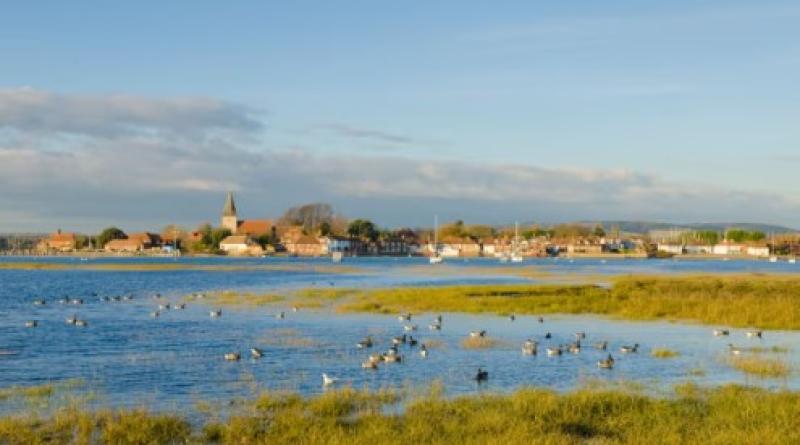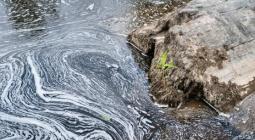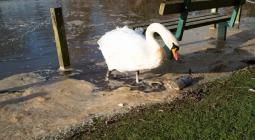Raw sewage discharged into Chichester harbour for over 1,200 hours in a month

Raw sewage has been discharged into Chichester harbour for more than 1,200 hours in the past month, in what campaigners described as “an assault on the environment”.
The protected harbour in West Sussex, which is a designated area of outstanding natural beauty (AONB), has been subjected to the discharges since 24 October.
Data from Southern Water’s Beachbuoy system, which shows real-time sewage discharges from storm overflows, reveals the storm outflow at Thornham in Chichester has been releasing sewage for 710 hours and five minutes between 24 October and 23 November.
The storm overflow at Bosham, also in the harbour, shows a number of discharges including one of 281 hours and 24 minutes between 27 October and 8 November, and another of 213 hours and 7 minutes.
Ed Acteson of SOS Whitstable, which campaigns for an end to raw sewage dumping in Kent, Sussex and Hampshire, said: “That a coastal bathing location such as Chichester harbour, a designated area of outstanding natural beauty, should suffer over 1,200 hours of sewage pollution in a under month is nothing short of an assault on the environment.”
The wildlife site is one of 34 in England protected by law to conserve and enhance its natural beauty.
Southern Water has labelled the raw sewage discharges as “genuine” on its Beachbuoy app, suggesting it believes they are compliant with permits issued by the Environment Agency. The company is blaming heavy rainfall caused by Storm Babet and Storm Ciarán for the discharges.
Matt Briers, the chief executive of Chichester Harbour Conservancy, said: “Water quality sampling in the harbour has confirmed increased levels of pollution following recent heavy rainfall.
“This highlights the inability of local infrastructure to cope and the critical importance for urgent improvements to infrastructure essential in preventing pollution entering the harbour from storm overflow and runoff.”
Briers said the conservancy group would continue to push for tighter control of pollution in the sea that was fit for a protected natural landscape.
He said the group was “extremely concerned” about the impact of pollution in the harbour resulting from human activity. This can range from sewage entering the harbour water but also microplastics, chemicals and nitrates.
“The harbour AONB is one of the most important sites for wildlife in the UK. Already threatened, its protected habitats were assessed to be in an ‘unfavourable declining’ condition in 2021,” he said. “Good water quality is essential for the health of the harbour; particularly for the wildlife that depend on it.”
Chichester harbour is one of three harbours where Southern Water is spending £72m on treating more wastewater and reducing storm overflows to help the natural habitats.
SOS Whitstable also highlighted that during a similar time period, two outfalls in Sandown, Isle of Wight, had more than 1,380 hours combined spillage time.
Storm Babet hit the UK on 18-20 October, with the Met Office recording the three-day period as the third wettest for England and Wales since 1891.
Storm Ciarán followed from 1-2 November, causing a major incident in Hampshire and the Isle of Wight as it worsened existing flooding problems.
“The astonishing length of the sewage releases … will have a devastating environmental effect on these areas and, despite the heavy rainfall in recent weeks, there can be absolutely no justification over this level of water pollution,” said Acteson.
“Storm overflows are supposed to be used in exceptional circumstances to ease pressure on the sewage network. How could anybody seriously claim that a month of consecutive sewage pollution is ‘exceptional’?”
A spokesperson for Southern Water said: “We agree with campaigners and our customers that storm overflow releases are not acceptable and that’s why reducing this is our top priority.”
Explaining the cause of these specific incidents, the spokesperson added: “These longer releases are as a result of weeks of heavy rainfall, where either surface water is running off already saturated ground into our sewers, or groundwater is forcing its way into our pipes as pressure builds.”
Photograph: Ian West/Alamy





